#joseph martello
Explore tagged Tumblr posts
Text
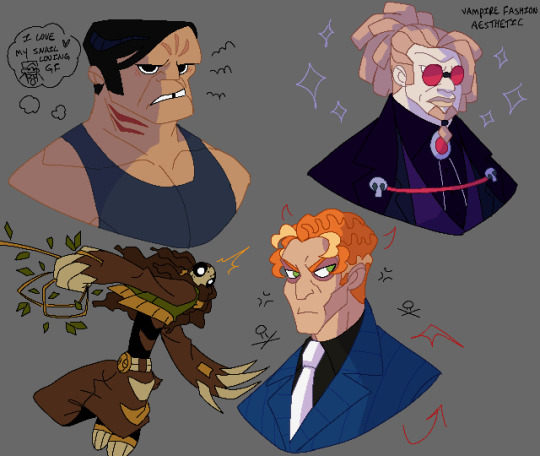
more tssm styled "doodles" <3
3 busts and a little vine swinging sloth!
original images: [X] [X] [X] [X]
#my art#phone art#spidersona#tssm hammerhead#tssm norman osborn#tssm tombstone#hammerhead#joseph martello#norman osborn#tombstone#l thompson lincoln#still don't know how to tag that man
120 notes
·
View notes
Text


COMMISSION
HAMMERHEAD design
#marvel#illustration#digital art#fanart#artwork#br art#brazilian artist#comic book#comic#villain#marvel villains#spiderman villains#joseph martello#hammerhead#marvel hammerhead#commission#art commisions#job#work#character design#au#redesign#spidersona#spiderverse#artwormartins#my art
9 notes
·
View notes
Text

Comic panel redraw. The hammerhead and Chameleon relationship thing give me the funny idea, LOL
Dmitri is already the future crime lord but he’s trying to make himself worthy
The original :

#marvel#spider sona#spider sona villain#comic panels redraw#among the crime lord other than Dmitri’s dad he’s also has contact with Hammerhead#and they’re friend<33#chameleon#dmitri smerdyakov#hammerhead#joseph martello#tombstone#lonnie lincoln#doodle#procreate#procreateart#procreatedrawing#drawing
24 notes
·
View notes
Text
L'infernale Quinlan
Benvenuti o bentornati sul nostro blog. Nello scorso articolo abbiamo deciso di cambiare nuovamente argomento e passare al mondo della letteratura con un libro recente che mi ha profondamente sorpreso, Piranesi di Susanna Clarke. Piranesi è un uomo che vive nella Casa, un luogo immenso, composto da innumerevoli saloni, vestiboli e con un grande numero di Statue, tutte differenti tra loro. Lui…
#Aaron Stell#Akim Tamiroff#Alexander Golitzen#Badge of Evil#Bill Thomas#Bud Westmore#Carlo Baccarini#Charlton Heston#Claudio Capone#Crane shot#Dennis Weaver#Edward Curtiss#Emilio Cigoli#film#Giorgio Capecchi#Hank Quinlan#Henry Mancini#Janet Leigh#Joanna Moore#Joe Grandi#Joseph Calleia#L&039;Infernale Quinlan#Lalo Rios#Los Robles#Manolo Sanchez#Maria Pia Di Meo#Marlene Dietrich#Melina Martello#Mercedes McCambridge#Mexico
1 note
·
View note
Text
- Villians Roster -
This is exactly what it sounds like, now a companion post to the Allies Roster! Peter has faced a lot of villians across his years in the suit. So this is the line-up of guys, at least more commonly known ones(in my opinion) that both TASM and MCU Peter Parker/Spider-Man has taken on. This is a combination of hinted and implied faceoffs, leaked information of what never happened, and personal opinion of who I personally think they're likely to have gone up against(so far). This will be updated as needed.
Any names on this list are free-game to refer to in threads.
Villians are listed by both name and allias.
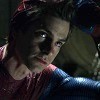
TASM Peter Parker/Spider-Man
Dr. Curt Conners, "The Lizard"
Alexsie Sytsevich, "The Rhino"
Max Dillon, "Electro"
Harry Osborn, "Green Goblin"
Quentin Beck, "Mysterio"
Dr. Otto Octavius, "Doc Ock"
Dr. Adrian Toomes, "The Vulture"
Sergei Kravinoff, "Kraven the Hunter"
Flint Marco, "Sandman"
Eddie Brock, "Venom"
Cletus Kasady, "Carnage"
Wilson Fisk, "Kingpin"
Mac Gargan, "Scorpion"
Morbius
Joseph Martello, "Hammerhead"
more-antagonist-than-villian Felicia Hardy, "Black Cat"
Norman Osborn, "Green Goblin" (Raimi Version)
Dr. Otto Octavius, "Doc Ock" (Raimi Version)
Flint Marco, "Sandman" (Raimi Version)
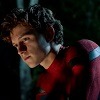
MCU Peter Parker/Spider-Man
Mac Gargan, "Scorpion"
Adrian Toomes, "The Vulture"
Herman Schultz, "Shocker"
Joseph Martello, "Hammerhead"
Quentin Beck, "Mysterio"
Dr. Curt Conners, "The Lizard" (Webb Version)
Max Dillon, "Electro" (Webb Version)
Dr. Otto Octavius, "Doc Ock" (Raimi Version)
Norman Osborn, "Green Goblin" (Raimi Version)
Flint Marco, "Sandman" (Raimi Version)
Wilson Fisk, "Kingpin"
Lonnie Lincon, "Tombstone"
Sergei Kravinoff, "Kraven the Hunter"
more-antagonist-than-villian Felicia Hardy, "Black Cat"
3 notes
·
View notes
Text
Prompts
Master list
* EDITING IN PROCESS.
Rules
- Emoji anons are welcomed
- I only write for male, gn, or ftm trans readers
- I prefer writing for amab readers
- no incest, ya nasty.
- no pedo shit.
- if I write a character who is a minor, it is strictly platonic.
- I write for platonic fics for characters over the age of 18 to.
- no SH, suicide, rape, SA, no shit like that, please.
- No “yandere” stuff.
- if I ignore your request, I either didn’t see it, didn’t know how to write it, or it just went against one of my rules.
- please, put if you want the reader to be male or gn.
NSFW rules
- non of the sub reader stuff, unless they are at the hands of a power bottom (preferably character)
- I prefer the reader to be penetrating, if there is any.
- preferably amab reader. Y’know, with a pee pee. Or a trans (ftm) reader with surgery.
- I will write for a female bodied reader (ftm) without surgery too, just saying I prefer a wee wee.
Fandoms I write for:
Oscar Isaac characters
Steven Grant (Moon Knight). Marc Spector (Moon Knight). Jake Lockley (Moon Knight). William Tell (The Card Counter). Santiago “Pope” Garcia (Triple Frontier). Nathan Bateman (Ex Machina). Jonathan Levy (Scenes Fromba Marriage). Abel Morales (The Most Violent Year). Will Dempsey (Life Itself). Rydal (The Two Faces of January). Nick Masicsko (Show Me a Hero). Jack (Mojave). Shiv (Pu-239). Miguel “Spider-Man 2099” O’Hara (Spider-Man: Across the Spider-Verse). Duke Leto (Dune). Kane (Annihilation). Palo “Poe” Dameron (Star Wars). Llewyn Davis (Inside Llewyn Davis). Richard (The Letted Room). Paul Gauguin (At Eternity’s Gate). Cecil (Revenge on Jolly!). Lightening Face (Basil Stitt).
Call of Duty: Modern Warfare 2
Characters:
Tasks force 141- Cpt. John Price. John “Soap” MacTavish. Simone “Ghost” Riley. Kyle “Gaz” Garrick.
Las Vaqueros- Colonel Alejandro Vargas. Rodolfo “Rudy” Parra.
Other- Kate Laswell. Commander Phillip Gaves. “König”.
Six
Characters:
Richard “Rip”. Joseph “Bear” Graves. Alex Claude. Ricky “Buddha”. Robert Chase III. Dominic Adams.
Rainbow Six Siege
Characters:
Viperstrike- Nayara “Brava” Cardoso. Grace “Dokkaebi” Nam. Ryad “Jackal” Al-Hassar. Yumiko “Hibana” Imagawa. Vicente “Capitão” Souza. Mike “Thatcher” Baker. Elias “Blitz” Kötz. Kana “Alamo” Fujiwara. Adriana “Maestro” Martello. Aria “Alibi” Luca. Masaru “Echo” Enatsu. Mark “Mute” Chandar. Julien “Rook” Nizan. Marius “Jäger” Streicher.
Nighthaven- Charlie Tho “Grim” Keng Boon. Anja “Osa” Janković (platonic). Håvard “Ace” Haugland. Jaimini “Kali” Shah. “Finka”. Monika “IQ” Weiss. Alpha “Aruni” Tawanroong. Ngugi “Wamai” Furaha. Elżbiedts “Ela” Bosak. Elena “Mira” Álvarez. James “Smoke” Porter. Jack “Pulse” Estrada.
Wolfguard- Néon “Sens” Ngoma. Sanaa “Nomad” Maktoub. Olivier “Lion” Flament. Siu “Ying” Lin. Gilles “Montagne” Touré. Emmanuel let “Twitch” Pichon. Mina “Thunderbird” Sky. Thandiwe “Melusi” Ndlovu. Morowa “Clash” Evans. Tina “Frost” Tsang. Miles “Castle” Campbell. Gustave “Doc” Kateb. Dominic “Bandit” Brunsmeier.
Ghosteyes- Santiago “Flores” Lucero. Samuel “Zero” Fisher. Nienke “Iana” Meijer. “Nøkk”. Erik “Maverick” Thorn. Zofia Bosak. “Glaz”. Ana “Solis” Díaz. Collinn “Warden” McKinley. Max “Mozzie” Goose. Chul “Vigil” Hwa. Liu “Lesion” Long. Taina “Cerveira” Pereira. Meghan “Valkyrie” Castellano.
Redhammer- Azucena “Amaru” Quispe. Tori “Gridlock” Fairous. Craig “Blackbeard” Jenson. Sebastien “Buck” Côté. Seamus “Sledge” Cowden. Eliza “Ash” Cohen. Jordan “Thermite” Trace. “Fuze”. Brianna “Thron” Skehan. Said “Oryx” Hadid. César “Goyo” Herbández. Jalal “Kaid” Fassi. “Tachanka”. “Kapkan”.
Lucifer (Netflix)
Characters:
Angels- Amenadiel. Lucifer Morningstar.
Demons- Mazikeen.
Detective/or works in that field- Ella Lopez. Dan. Marcus Pierce.
Other- Eve.
DC
Characters:
Justice League- Clark “Superman” Kent. Bruce “Batman” Wayne. Diana “Wonder Woman” Princess. Barry “The Flash” Allen. Hal “Green Lantern” Jordon. Victor “Cyborg” Stone. Arthur “Aquaman” Curry. Oliver “Green Arrow” Queen.
Bat-fam- Bruce “Batman” Wayne. Dick “Nightwing” Grayson. Jason “Red Hood” Todd. Tim “Red Robin” Drake. Damian “Robin” Wayne. Stephanie “The Spoiler” Brown. Cassandra “Orphan” Cain. Duke “The Signal” Thomas. Kathy “Batwoman” Kane. Barbara “Batgirl” Gordon.
Hero- Kara “Supergirl” Zor-El. Queen “Wonder Woman” Nubia. Donna “Wonder Girl” Troy. Karen “Power Girl” Starr. Raymond “Atom” Palmer. Dinah “Black Carney” Lance. Wally “The Flash” Weat. Jon “Superboy” Kent. Koriand’r “Starfire”. Rachel “Raven” Roth. Garfield “Beast Boy” Logan. Zatanna Zatara. John “Hellblazer” Constantine.
Green lanterns- Hal “Green Lantern” Jordon. John “Green Lantern” Stewart. Kyle “Green Lantern” Rayner.
Villain- Jack “Joker” Naiper. Harlen “Harley Quinn” Quinzel. Edward “The Riddler” Nygma. Selina “Catwoman” Kyle. Pamela “Posion Ivy” Isley. Floyd “Deadshot” Lawton. Jonathan “Scare Crow” Crane. David “Black Manta” Hyde.
Other- Lucifer Morningstar.
Marvel
Characters:
Avengers- T’Challa “Black Panther”. Sam “Falcon” Wilson. Steve “Captain America” Rogers. Natalia “Black Widow” Alianovna. Bucky “Winter Soldier” Barnes. Clint “Hawkeye” Barton. Tony “Iron Man” Stark. Thor Odinson.
Hero’s- Roberta “Captain America” Mendez. Matt “Daredevil” Murrdock. Scott “Ant-Man” Lang. Peter “Star Lord” Quill,
Deadpool- Wanda “Lady Deadpool” Wilson. Wade “Deadpool” Wilson.
MoonKnight- Steven “Mr. Knight” Grant. Marc “MoonKnight” Spector. Khonshu. Jake “Mr. Knight” Lockley.
Spider-men- Cooper “Web-Weaver” Coen. May “Spider-Girl” Parker. Hobie “Spider-Punk” Brown. Ben “Scarlet Spider” Reilly. Kaine “Scarlet Spider” Parker. Miguel “Spider-Man 2099” O’rara. Anya “Spider-Girl” Corázon. Gwen “Spider-Gwen” Stacy. Miles “Spider-Man” Morales. Cindy “Silk” Moon. Mary “MJ” Jane. Peter “Spider-Man” Parker.
Other- Tony “Taskmaster” Masters. Brock “Crossbones” Rumblow. Joaquín “Falcon” Torres. Yelena “White Widow” Belova. Gwen “Gwenpool” Poole. Kraven “Kraven the Hunter”. Felicia “Black Cat” Hardy. Soel “Luna Snow” Hee. Elektra Natchios. Albert “Spawn” Simmons. Frank “Punisher” Castle. Loki Odinson. Stephen “Doctor Strange” Strange.
Triple Frontier
Characters:
Francisco Morales. Santiago “Pope” Garcia. Tom “Redfly” Davis.
The Card Counter
Characters:
William Tell. La Linda. Clirk Rogers.
A Most Violent Years
Characters:
Abel Morales. Lawrence. Peter Forente..
The Two Faces of January
Characters:
Chester’s McFarland. Rydal.
Ex Machina
Characters:
Nathan Bateman.
Scenes From a Marriage
Characters:
Jonathan Levy.
Life Itself
Characters:
Will Dempsey.
Show Me a Hero
Characters:
Nick Wasicsko. Micheal Sussman?
Mojave
Characters:
John “Jack” Jackson.
Pu-239
Characters:
Shiv.
Dune
Characters:
Duke Leto.
Spider-Man: Across the Spider-Verse
Characters:
Miguel “Spider-Man 2099” O’Hara. Peter “Spider-Man” B. Parker. Jessica “Spider-Woman” Drew. Peter “Spider-Man Noir” Parker.
Obey Me! Shall We Date?
Demons- Lucifer. Mammon. Leviathan. Satan. Asmodues. Beelzebub. Belphegor. Diavolo. Barbatos.
Angels- Simeon. Luke (platonically).
Humans- Solomon.
Anime’s:
*If the characters are like high schoolers, I will only right with them aged up. However, if the character I’d like 14 and below, I will note write with at all because 15 and above I can get a more accurate less childish personality with them being aged up.
Devil Man Crybaby
Characters:
Akira Fudo. Ryo Asuka. Miki Makimura. Miki Kurado. Psycho Jenny.
Haikyu!! (Ify about this one)
Kurasuno- Yu Nishinoya. Tobio Kageyama. Kei Tsukishima. Kiyoko Shimizu. Shoto Hinata. Ryūnosuke Tanaka. Koshi Sugawara. Hitoka Yachi. Tadashi Yamaguchi. Keishin Ukai. Daichi Suwamura.
Nekoma- Kenma Kozume. Tetsurō Kuroo. Lev Haiba.
Aoba Johsai- Toru Oikawa. Hajime Iwaizumi.
Fukurōdani- Kōtarō Bokuto. Keiji Akaashi.
Shiratorizawa- Wakatoshi Ushijima. Satori Tendo.
Attack on Titan
Characters:
Scout Regiment- Armin Arlert. Mikasa Ackerman. Levi Ackerman. Hange Zoë. Sasha Brown. Erwin Smith.
Military Regiment- Hitch Dreyse. Kenny Ackerman.
Warriors- Reiner Braun. Annie Leonhart.
Nobility- Historia Reiss.
Eldia- Ymir Fritz.
Paradise Island- Carla Jeager. Kuchel Ackerman.
Sword Art Online
Character:
Kirito. Asuna. Sinon.
Seven Deadly Sins
Characters:
Meliodas. Escanor. Gowther. Ban. Diane. King.
Hunter x Hunter
Characters:
Killua Zoldyck (platonic). Gon Freecss (platonic). Kurapika. Chrollo Lucifer. Feitan. Leorio.
Parasyte
Characters:
Satori Murano. Shinichi Izumi. Kana Kimishima.
Demon Slayer
Characters:
Ubuyashiki Family- Kagaya Ubuyashiki.
Hashira- Giyu Tomioka. Mitsuri Kanroji. Sanemi Shinazugawa. Gyomei Himejima. Shinobu Kocho.
Former Hashira- Kyojuro Rengoku. Tengen Uzui.
Demon Slayers- Tanjiro Kamado. Zenitsu Agatsuma. Inosuke Hashibira.
Demons- Muzan Kibutsuji. Enmu.
Death Note
Blue Exorcist
Ouran High School Host Club
Soul Eater
Black Butler
Angels of Death
High-rise Invasion
Noragami
Psycho-pass
Monthly Girls Nozaki-kun
The Way of the House Husband
Kotoro Lives Alone (platonic w/ Kotoro)
Cowboy Bebop
Jujutsu Kaisen
17 notes
·
View notes
Text
The Waynes
read it on AO3 at https://ift.tt/onDcahV by TheFlashWriter The light of the bat signal slowly dimmed, the night sky returning to the pitch blackness as a group of friends surrounded the pillars of a Gotham building. Spraying black paint across the pillars. “The signal’s gone?” “Then he’s probably gone as well!” “You sure?” “Of course I am!” They continued spray painting, and as the bat signal shut for the night, a much more terrifying sound echoed through the Gotham sky. Thwip. The friends stopped, dropping their cans of spray paint as they looked to the sky. A man, swinging from building to building from a web, highlighted in the Gotham City skyline. Spider-Man. Words: 5219, Chapters: 1/?, Language: English Fandoms: Spider-Man - All Media Types, The Batman (Movie 2022) Rating: Teen And Up Audiences Warnings: Graphic Depictions Of Violence Categories: F/M Characters: Peter Wayne, Bruce Wayne, Officer Martinez (The Batman Movie 2022), Felicia Hardy, Selina Kyle, Wilson Fisk, Carmine Falcone, Oswald Cobblepot, Edward Nygma, Adrian Toomes, Herman Schultz, L. Thompson Lincoln (The Spectacular Spider-Man), J. Jonah Jameson, Jim Gordon, Joseph Martello, George Stacy Relationships: Selina Kyle/Bruce Wayne, Felicia Hardy/Peter Wayne, Peter Wayne & Bruce Wayne, Alfred Pennyworth & Bruce Wayne, Alfred Pennyworth & Peter Wayne Additional Tags: Ultimate Spider-Man (2024) inspired, peter Parker AU, Peter Parker is a Wayne now, Canon divergence - The Batman (2022), Jennifer Tilly - Freeform, Jennifer Tilly is so hot bro read it on AO3 at https://ift.tt/onDcahV
0 notes
Text
Like or Reblog this for a starter with Teacher!Hammerhead
#ooc#starter call#the teacher who was framed for a string of crimes he did not commit :: Hammerhead/Joseph Martello (teacher au) ::#spiderman rp#marvel rp#msm 2017 rp#spiderman roleplay
5 notes
·
View notes
Photo

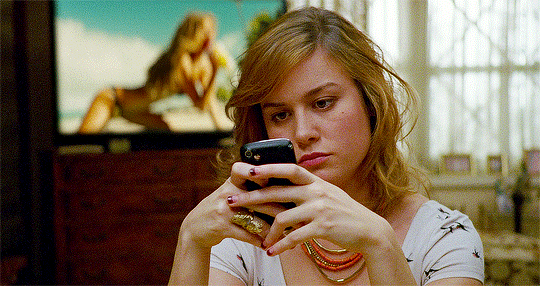
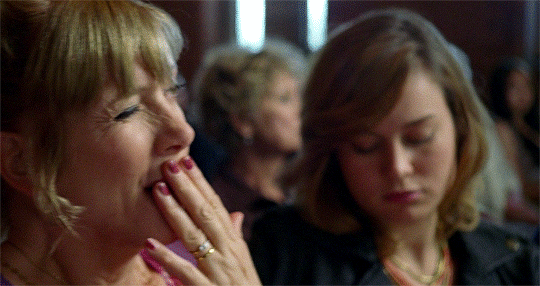
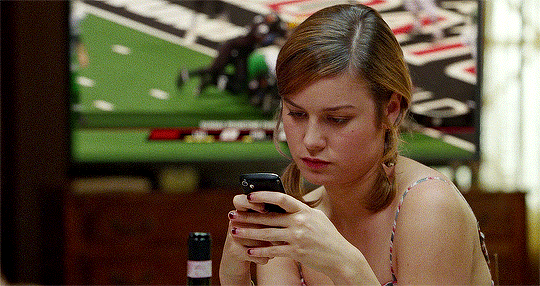
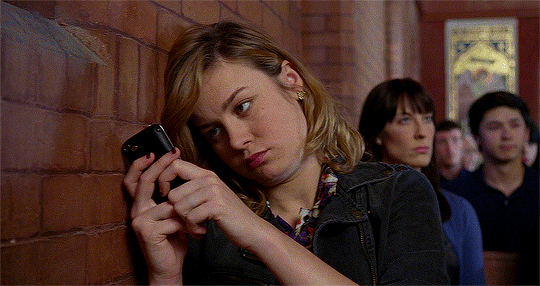
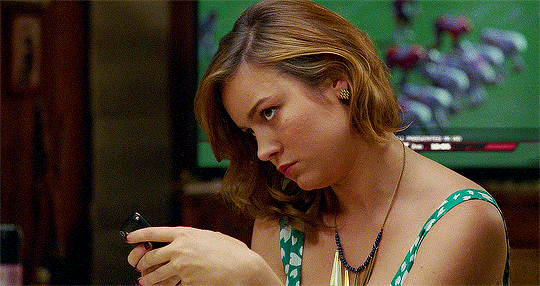
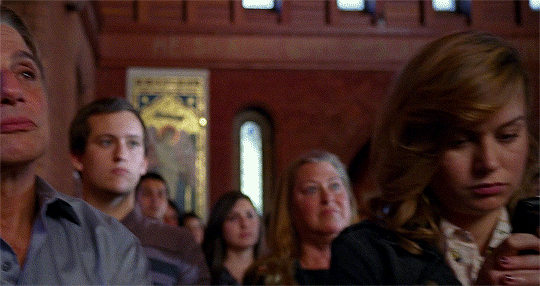

Brie Larson as Monica Martello Don Jon (2013) dir. Joseph Gordon-Levitt
#don jon#brie larson#blarsonedit#brielarsonedit#filmedit#filmgifs#doyouevenfilm#cinemapix#dailyflicks#moviegifs#useroptional#chewieblog#usersameera#userrobin#userel#usercroft#usercelebs#userksusha#mikaeled#kane52630#gifs#movie
2K notes
·
View notes
Text
Friday 12 January 1838
8 50
11 ¾
Good kiss last night fine clear hard frosty morning F27° and breakfast at 9 50 no! breakfast at 10 in about ½ hour a few minutes with A- out at 11 – with Robert Mann + 4 at the Laundry court road drain re-began yesterday – then with Joseph Mann and my own 2 one horse carts with Sam Booth + 2 as fillers carting away meer-embankment stuff from Pearson’s Tilley holme and Sown – home at 12 ½ and then with A- at luncheon and stood reading aloud to her Tobins’ journal till after 1 – then out with Robert Mann and about – A- off to Cliff Hill at 2 and back at 4 – Mr. Jubb came about 2 ½ to see Sarah the kitchen maid – not so well – very poorly – I said she had best go home Mr. J- staid ¼ hour – Mrs. AW. rather shaken by her recent fall but very well in general health – had apparently been in not good sorts with Mr. J- said it was high time to pay his bill for physic and stuff – I hoped she would get over next summer – next summer! said J- apparently at unawares – yes! many a summer – surely then poor A- and I may get off in peace – on Mr. J-‘s going had Mr. Pollett and gave him check for £300 n°207 in full for the water wheel but told him previously that I thought all was not right with the wheel – I should have it examined by an experienced wheelwright and if the construction was not what it ought to be Mr. Pollett must look to it – he was beginning to say it was done according to specification etc. yes! I did not doubt that but before connecting it with new geering I should call in a wheelwright and take advice – I mentioned this thinking it handsome so to do – about 3 or very soon after came Mr. Bull – 2 of his young men had been levelling at the meer since before noon B- shewed me his plan of clow – I said it would cost £50 and he agreed it would – thinking there might be a different arrangement of the clow, took Robert Mann with B- and went down to the meer – examined – explained – wanted the clow to be as much hid as possible in a little recess behind the projected boat-house – could not the clow be worked in a sort of Martello tower not more than 2ft. above the top of the bank instead of as B- had planned in a square place or clow-house requiring 5ft. of height over it above the bank and with a 22ft. long culvert up to the 3ft. square clow? yes! B- thought my plan would answer and not be more expensive than his plan – this to be considered and to come again next Saturday week at 11 am with plan and estimate – Booth and Holt to be here and Robert Mann – the mason work to be let, and the iron work done by the navigation [?] casters and on their models – B- thinks the job may be done in a fortnight – he came in again to shew me his plan and drawings of 2 Elizabethan houses to be done for £700 for Mr. James Norris – I said all I could in praise of the drawings – glad he B- had shewn me them thought they did him credit – I slightly observed the upper windows seemed rather too wide (they looked 2 sashes as to width separated by a mullion) but it appeared that such and said accommodation must be had - .:. I said no more – had before mentioned the water wheel – what I had said to Mr. Pollett – cost – vexation etc – B- thought it had been Henry Bates but on hearing it was Timothy B- and c° said he (B-) had tried them and dismissed them from all work under him – too high in charges and not good workmanship – shewed him the model of the wheel – B- had no doubt the buckets were too close, and did not properly throw out the water – this perhaps the only fault – I said it was enough – yes! B- owned it might occasion a loss of ½ the power of the wheel – changing the buckets might cost £40 – B- to look into the matter next Saturday B- had wine on his arrival and on going away about 6 ½ - ¼ hour with A- dressed – dinner at 7 5 – A- read French – tea – read aloud a great deal of the paper the interesting accounts from Canada, and the melancholy account of the total destruction by fire on Wednesday night and yesterday morning of the Royal exchange – no surmise as to the cause of the fire – 1st discovered in Hoyds coffee room about 11 pm on Wednesday – the flames not out at 5 am yesterday but subdued that fear of further danger was dispelled – wrote all the above of today till 10 35 pm fine clear day – very cold stood talking to A- in her room 20 minute till 10 55 pm at which hour F26°
4 notes
·
View notes
Text

anvil head (affectionate)
81 notes
·
View notes
Photo

Martello Towers near Baxhill, Sussex, Joseph Mallord William Turner, 19th century, Harvard Art Museums: Prints
Harvard Art Museums/Fogg Museum, Bequest of Grenville L. Winthrop
https://www.harvardartmuseums.org/collections/object/262134
2 notes
·
View notes
Text
The Crime Cartel
a cabal of some of Earth’s most powerful crime lords. They operate out of New York City and its key members are The Finisher ( The oldest and the most powerful ), Mister Negative ( the youngest member ), Silvermean, Tombstone ( aka The Lady adapted from The Big man) and hammerhead

Here is a little bit of The Finisher ref. sheet ( and doodle )
Karl Fiers
He’s the head of the chameleon also Damitri father. This guy already 100+ (as a result of super soldier serum ) , living in the same time with Captain America and he’s belongs to Hydra before, but after the world war, he design to split out and making his own gang. THE CHAMELEON
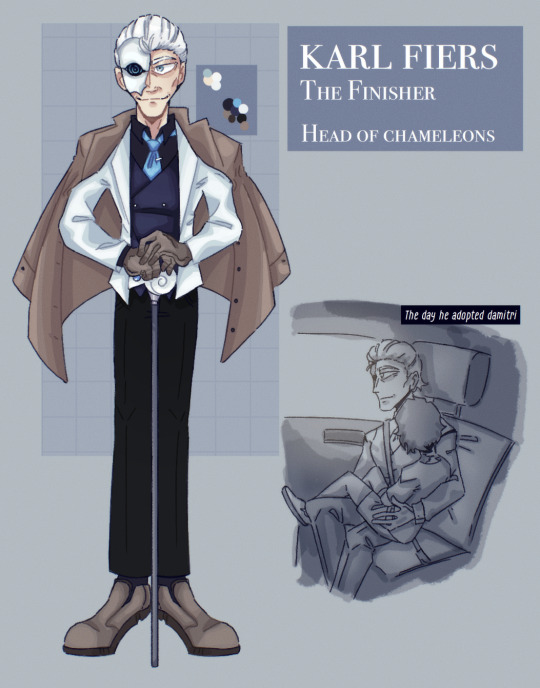
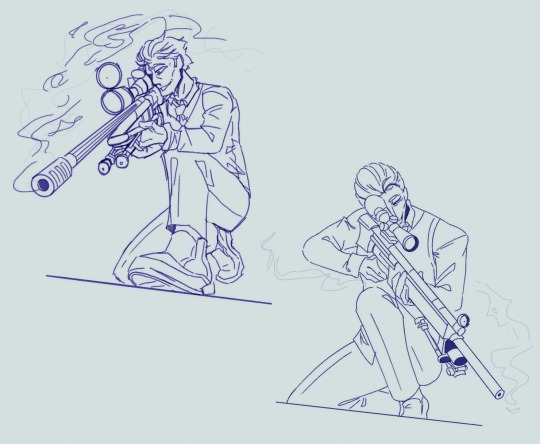
#marvel#spider sona#The ceime cartel#the finisher#Karl Fiers#martin li#mister negative#Silvio Manfredi#silvermane#Lonnie Lincoln#Tombstone#Joseph Martello#Hammerhead#procreate#procreateart#drawing#procreatedrawing#spider man
35 notes
·
View notes
Text
Week 2
From Origins to the Future: The Hero and the Epic Quest.
This week and the next we shall engage in one of the traditional approaches to comparative practice, following various re-appearances of a myth / hero / genre through successive literary periods and in different countries. The example we shall use is the figure of Odysseus / Ulysses in epic writing and film from Homer to the turn of the 21st century. We shall consider how this figure has changed, and focus on specific episodes of Homer’s original epic poem.
Homer, The Odyssey (read in particular Book 1 and the episode of the Cyclops (in Book 9);
Dante, Inferno (read canto 26, Ulysses);
James Joyce, Ulysses (read the ‘Cyclops’ episode (the 12th, pp. 280-330 in Johnson))
Stanley Kubrick, 2001: A Space Odyssey (1968) (Film: Please watch this in advance of the seminar)
Some secondary reading on Homer’s Odyssey & the figure of Odysseus/Ulysses
Boitani, Piero, The Shadow of Ulysses: Figures of a Myth, tr. Anita West (Oxford: Clarendon Press, 1994). [Has an excellent chapter on Dante's Ulysses]
Doherty, Lillian E., "The Snares of the Odyssey: A Feminist Narratological Reading", in Texts, Ideas, and the Classics: Scholarship, Theory, and Classical Literature, ed. by S. J. Harrison (Oxford: Oxford University Press, 2001), pp. 117-133. Foley, John M. (ed.), A Companion to Ancient Epic (Oxford: Blackwell, 2005)
Fowler, Robert (ed.), The Cambridge Companion to Homer (Cambridge: Cambridge UP, 2004).
Graziosi, Barbara, end Emily Greenwood (eds.), Homer in the Twentieth-Century: Between World Literature and the Western Canon (Oxford: Oxford University Press, 2007).
Jong, Irene de, A Narratological Commentary on the Odyssey (Cambridge: Cambridge University Press 2001)
Hall, Edith, The Return of Ulysses: A Cultural History of Homer’s Odyssey (London and New York: I.B. Tauris, 2008).
Lane Fox, Robin, Travelling Heroes: Greeks and their Myths in the Epic Age of Homer (London: Allen Lane, 2008)
Manguel, Alberto, Homer’s The Iliad and The Odyssey A Biography (London: Atlantic Books, 2007).
Murnaghan, Sheila, Disguise and Recognition in the Odyssey (Princeton: Princeton University Press, 1987).
Stanford, W. B. The Ulysses Theme: A Study in the Adaptability of a Traditional Hero (Ann Arbor: University of Michigan Press, 1963).
Some secondary reading on Kubrick
Bizony, Piers, 2001: Filming the Future (London: Aurum, 1994)
Chion, Michel, Kubrick's Cinema Odyssey. Trans. Claudia Gorbman (London: BFI, 2001)
Ciment, Michel, Kubrick. Trans. Gilbert Adair (New York: Holt, Rinehart, and Winston, 1983)
Cocks, Geoffrey, James Diedrick, and Glenn Perusek (eds.), Depth of Field: Stanley Kubrick, Film and the Uses of History (Madison, WI: University of Wisconsin Press, 2006)
Falsetto, Mario, Stanley Kubrick: A Narrative and Stylistic Analysis (Westport, Conn; London: Praeger, 1994)
Falsetto, Mario (ed.), Perspectives on Stanley Kubrick (New York: G.K. Hall; London: Prentice Hall, 1996)
Herr, Michael, Kubrick (New York: Grove Press, 2000)
Kolker, Robert (ed.), Stanley Kubrick's 2001: A Space Odyssey: New Essays (Oxford: Oxford University Press, 2006)
Nelson, Thomas Allen, Kubrick: Inside a Film Artist's Maze (Bloomington: Indiana University Press, 1982)
Naremore, James, On Kubrick (London: British Film Institute, 2007)
Rasmussen, Randy, Stanley Kubrick: Seven Films Analyzed (London: McFarland, 2001)
Wheat, Leonard F., Kubrick's 2001: A Triple Allegory (Lanham, MD, and London: Scarecrow Press, 2000)
Some secondary reading on the epic
Bates, Catherine (ed.), The Cambridge Companion to the Epic (Cambridge: Cambridge University Press, 2010)
Beissinger, Margaret, Jane Tylus, and Susanne Wofford (eds.) Epic Traditions in the Contemporary World: The Poetics of Community (Berkeley: University of California Press, 1999)
Clarke, M. J., B. G. F. Currie, and R. O. A. M. Lyne (eds.), Epic Interactions: Perspectives on Homer, Virgil, and the Epic Tradition (Oxford: Oxford University Press, 2006)
Danow, David K., Transformation as the Principle of Literary Creation from the Homeric Epic to the Joycean Novel (Lewiston, NY: Edwin Mellen Press, 2004)
Elley, Derek, The Epic Film: Myth and History (London: Routledge & Kegan Paul, 1984)
Foley, John Miles (ed.), A Companion to Ancient Epic (Oxford: Wiley-Blackwell, 2009)
Hardie, Philip, The Epic Successors of Virgil: A Study in the Dynamics of a Tradition (Cambridge: Cambridge University Press, 1993)
Hainsworth, J. B., The Idea of Epic (Berkeley: University of California Press, 1991)
Hurst, Isobel, Victorian Women Writers and the Classics: The Feminine of Homer (Oxford and New York: Oxford University Press, 2006)
King, Katherine Callen, Ancient Epic (Chichester: John Wiley & Sons, 2009)
Konstan, David and Kurt A. Raaflaub, eds., Epic and History (Chichester: Wiley-Blackwell, 2010)
Merchant, Paul: The Epic (London: Methuen, 1971)
Miller, Dean A., The Epic Hero (Baltimore and London: Johns Hopkins University Press, 2000)
Johns-Putta, Adeline, The History of the Epic (Basingstoke and New York: Palgrave Macmillan, 2006)
Newman, John Kevin, The Classical Epic Tradition (Madison: University of Wisconsin Press, 1986)
Quint, David, Epic and Empire: Politics and Generic Form from Virgil to Milton (Princeton, N.J: Princeton University Press, 1993).
Roisman, Hanna M., and Joseph Roisman (eds.), Essays on Homeric Epic (Waterville, ME: Colby College, 2002)
Toohey, Peter, Reading Epic: An Introduction to the Ancient Narratives (London : Routledge, 1992)
Tucker, Herbert F., Epic: Britain's Heroic Muse 1790-1910 (Oxford and New York: Oxford University Press, 2008)
Winnifrith, Tom, Penelope Murray and K.W. Gransden, eds., Aspects of the Epic (London: Macmillan, 1983)
Some secondary reading on Ulysses
Guidebooks: (These classic ‘guidebooks’ can supplement the annotations in your edition of Ulysses.)
Don Gifford, Ulysses Annotated (Berkeley: University of California Press, 1988) Weldon Thornton, Allusions in Ulysses: An Annotated List (Chapel Hill: University of North Carolina Press, 1968) Harry Blamires, The New Bloomsday Book (London: Routledge, 1996)
Some suggested criticism on Ulysses
(This is a small selection of Joycean criticism, from useful collections of essays (Attridge, Latham, Hart and Hayman), to critics who read language and narrative very closely (Kenner, Senn), to works on the Homeric in Ulysses (Flack, Kenner, Seidel), to a few examples of studies which read Joyce through theoretical, historical, comparative, and postcolonial approaches.)
Derek Attridge, ed., The Cambridge Companion to James Joyce (Cambridge: Cambridge University Press, 1990) — ed., James Joyce’s ‘Ulysses’: A Casebook (Oxford: Oxford University Press, 2004) Scarlett Baron, ‘Strandentwining Cable’: Joyce, Flaubert, and Intertextuality (Oxford: Oxford University Press, 2012) Frank Budgen, James Joyce and The Making of ‘Ulysses’ (Bloomington: Indiana University Press, 1961) Vincent J. Cheng, Joyce, Race and Empire (Cambridge: Cambridge University Press, 1995) Leah Culligan Flack, Modernism and Homer: The Odysseys of H.D., James Joyce, Osip Mandelstam, and Ezra Pound (Cambridge: Cambridge University Press, 2015) Clive Hart and David Hayman, eds., James Joyce’s ‘Ulysses’: Critical Essays (Berkeley: University of California Press, 1974) Hugh Kenner, Joyce’s Voices (Berkeley, Los Angeles, and London: University of California Press, 1978) — ‘Ulysses’ (London: George Allen and Unwin, 1980) Sean Latham, ed., The Cambridge Companion to ‘Ulysses’ (New York: Cambridge University Press, 2014) Karen Lawrence, The Odyssey of Style in ‘Ulysses’ (Princeton: Princeton University Press, 1981) Andrew J. Mitchell and Sam Slote, eds., Derrida and Joyce: Texts and Contexts, ed. (Albany: State University of New York Press, 2013) Katherine Mullin, James Joyce, Sexuality and Social Purity (Cambridge: Cambridge University Press, 2003) Michael Seidel, Epic Geography: James Joyce’s ‘Ulysses’ (Princeton and Guilford: Princeton University Press, 1976) Fritz Senn, Inductive Scrutinies: Focus on Joyce, ed. Christine O’Neill (Dublin: Lilliput, 1995) — Joyce’s Dislocutions: Essays on Reading as Translation, ed. John Paul Riquelme (Baltimore and London: Johns Hopkins University Press, 1984)
Online searchable concordance of Ulysses (e.g. if you can’t remember where the renowned Irish hero ‘Napoleon Bonaparte’ is mentioned, type it into a ‘string search’ and untick ‘whole word’) http://joyceconcordance.andreamoro.net/
Ulysses Synopsis
Ulysses: A Synopsis “Telemachia” 1 - “Telemachus” (Oxford World’s Classics, ed. J. Johnson, pp. 3-23 / Penguin, ed. D. Kiberd, pp. 1-28)- The chapter opens with Buck Mulligan celebrating a parodic mass in which Stephen Dedalus becomes an acolyte in spite of himself. Stephen is a melancholy artist obsessed with guilt since the death of his mother; his taciturn nature is contrasted with Mulligan’s clownish joviality. The Englishman Haines, their guest in the Martello Tower, combines seriousness with an enthusiasm for Gaelic culture; the three characters illustrate three possible positions in relation to Ireland, which is symbolised by the old peasant woman who brings in the milk: the dispossessed Son (Stephen), the treacherous usurper (Mulligan); the representant of English imperialism (Haines) who - through his dream of the panther, traditionally a symbol of Christ - is also associated by Stephen with the imperialism of the Roman Catholic Church. Stephen chooses errancy and exile: he gives over his key and will not come back. 2- “Nestor” (OWC 24-36 / Penguin 28-45)- Stephen teaches history and English Literature to a class of well-off schoolchildren who are disconcerted by his caustic humour and riddles. He confronts Mr Deasy (Nestor in Homer’s Odyssey) on Irish history and economics. The old headmaster cherishes his inaccurate reminiscences and promotes thrift, whereas Stephen squanders away the little money he has. Stephen views history as a nightmare. Despite the antagonism, Stephen agrees to help Mr Deasy is his fight against the foot and mouth disease which affects Irish cattle by helping him to publish a letter in the press. 3 - “Proteus” (37-50/45-64)- Stephen’s philosophical and aesthetic meditations lead him to question the reality of the outside world. Through a complex philosophical argument which hesitates between Aristotle and Berkeley, he redefines for himself the nature of visual and auditory perception. His literary recollections blend with the painful evocation of his past, especially the unsuccessful exile in Paris from which a telegram announcing his mother’s death recalled him. The sterility of Stephen’s “creations” in this chapter (which include urinating and depositing a snot on a ledge of rock [cf. Bloom’s own excremental “creation” in “Calypso”]) is pitted against the remarkable metamorphic poetic prose of the narrative and of Stephen’s stream of consciousness. Odyssey 4 - “Calypso” (53-67/64-85)- Leopold Bloom, who will increasingly become the major protagonist, is introduced in his home at 7 Eccles Street and is first seen preparing breakfast for himself and his wife Molly, who is still in bed. He goes out in search of a pork kidney at a Jewish butcher’s, where he picks up a leaflet advertising plantations in Palestine (inaugurating the theme of the lost, promised land, and of the “recall”). He brings Molly her mail, which includes a letter from Boylan, her future lover later in the day, announcing his visit. He explains to Molly the meaning of metempsychosis; the chapter ends with his defecation in the outhouse, mingled with his remarks on cheap literature. 5 - “The Lotus Eaters”(68-83/85-107) - Bloom has left his house for what will become the epic wanderings of an untypical literary hero, on an ordinary Dublin day - 16 June 1904. He first goes to fetch the reply, sent post restante, from his unknown penfriend Martha Clifford, to whom he sends amorous letters signed “Henry Flower”. He runs into several acquaintances on the way, unwittingly “throws away” a tip for the horse races (the source of a later misunderstanding), and eventually goes to the public baths. Throughout the chapter, drugs of all kinds (perfumes, tobacco, medicine, eroticism, religion, etc.) express a voluptuous narcissistic abandonment to the world of the senses. 6 - “Hades” (84-111/107-147)- Bloom goes to Paddy Dignam’s funeral together with Simon Dedalus (Stephen’s father) and other characters already seen in Dubliners. The conversation soon takes on a malevolent anti-Semitic tone which puts Bloom ill at ease. He thinks of death, remembering both his father’s suicide and the death of his son when he was only eleven days old. Bloom catches his first sign of Stephen (who does not see him). 7 - “Aeolus” (112-143/147-189)- Broken down into a series of newspaper articles complete with headings, this episode brings together, in different scenes and locations of the newspaper office, Bloom, Stephen, various “windbags” including Myles Crawford, the king of windy and hollow journalistic rhetoric. The orators outdo one another in eloquence and the parable of the captive Jews provides the Irish with a mythical model. Stephen narrates a story illustrative of the paralysis of his fellow Dubliners which nobody pays attention to, while Bloom the ad canvasser gets severely ticked off by Myles Crawford. 8 - “Lestrygonians” (144-175/190-234)- The “food chapter”: Bloom is obsessed with food (it is between 1pm and 2pm) and alimentary thoughts, and tastes and smells of all kinds percolate through into the language and style of the episode (the rhythm of the chapter is dictated by the “peristaltic” [digestive] movement of the organism). Put off by the monstrous devouring mouths in the restaurant and obsessed by the impending encounter between Molly and Boylan, he finally orders a Gorgonzola sandwich and a glass of Burgundy wine at Davy Byrne’s pub. 9 - “Scylla and Charybdis” (176-209/235-280)- In the National Library, Stephen spins out his Aristotelian theory of artistic creation which boils down to a sublimated autobiography; his paradoxes on Shakespeare’s life and works fail to convince his Platonist audience. In the complex reasoning of the young artist, Shakespeare becomes like a god who begets himself through his works. Bloom puts in an appearance; Mulligan meets up with Stephen and offers a more burlesque conclusion to the philological / theological debate. 10 - “Wandering Rocks” (210-244/280-328)- This chapter is a pause in the narrative of Stephen’s and Bloom’s day, and it has no precise correspondence in Homer’s Odyssey. This central and “pedestrian” chapter is made up of 19 episodes which offer vignettes and snapshots of the various characters and cross-sections of the Irish capital and society, including Church (Father Conmee) and State (the Viceroy’s cavalcade); the chapter breaks down the so far focalised point of view. Stephen and Bloom appear only briefly and are not mentioned among the witnesses of the Viceroy’s cavalcade through the city. 11 - “Sirens” (245-279/328-376)- The language of this chapter aspires to the condition of music and forges linguistic equivalents to trills, staccatos, counterpoints, etc. The venue is the Ormond Bar, run by two flashy barmaids or “sirens”; while the tenors are busy competing against each other in a virile singing contest, Bloom listens and replies to Martha. Having eluded the seductive snares of music, he exits, leaving behind an ironic fart. 12 - “Cyclops” (280-330/376-449)- A satire against the bellicose patriotism and anti-Semitism of the Citizen, the “Cyclops” who eventually attacks Bloom physically, the chapter oscillates between the Citizen’s rhetorical bombast and sarcastic deflations which leave unscathed neither the British Empire nor Irish nationalism, while the anonymous narrator - a sardonic barfly and debt collector - offers a brilliant instance of Dubliners’ garrulity. The narrative is periodically interrupted by parodic asides in other voices and styles. Bloom the wandering Jew, who had come to Barney Kiernan’s pub to arrange to offer some money to Paddy Dignam’s widow, finds himself involved in an argument about nationalism and attempts to expound his conception of humanity, love and homeland. At the end, his escape from the Citizen’s assault is turned into a grandiloquent apotheosis. 13 - “Nausicaa” (331-365/449-499)- Bloom rests on the Sandymount rocks (Stephen in “Proteus” had also walked along Sandymount beach) and gazes at young girls in their bloom. One of them, Gerty MacDowell, teases him into an erection by an increasingly daring exhibitionistic pose; the distant eroticism ends with Bloom’s masturbation, climaxing with fireworks. The narrating voice is that of a writer of the romantic pulp fiction then fed to women - the kind of books read by Gerty, who accordingly sees in Bloom a mysterious “dark stranger”. When the point of view shifts to Bloom, we see Gerty depart limping; Bloom dozes off in postmasturbatory gratitude. The accelerated crescendo of the first “tumescent” part is followed by the exhausted sobriety of the second, “detumescent” half. 14 - “Oxen of the Sun” (366-407/499-561)- Bloom’s and Stephen’s paths cross once more in the lying-in hospital, amidst roistering medics. The chapter takes us through a roughly chronologised pastiche of the different styles of the English language until the turn of the century, deceptively mimicking the evolution of the foetus until its birth. The painful delivery of Mina Purefoy takes on a universal value and, although the talk ominously focuses on sterility and contraception, a thunderclap and a rain shower at the moment of birth symbolise the triumph of fertility. 15 - “Circe” (408-565/561-703)- Blooms monitors from a distance Stephen’s drunken escapade to the red-light district, and follows him into the hallucinatory atmosphere of Bella Cohen’s brothel (Circe’s den in the Homeric parallel). The characters experience metamorphoses in a wild oneiric dramatisation of their fantasies, obsessions and senses of guilt. Stephen gets involved in a broil with two English soldiers and is knocked out cold; Bloom rescues him and transforms him into the ambiguous vision of his dead son Rudy. “Nostos” [=homecoming] 16 - “Eumaeus” (569-618/704-766)- Bloom leads Stephen to the cabman’s shelter, and the shared physical exhaustion (it is past midnight) and the unreliable narrator turn the chapter into an amusing, if often tedious, collection of deliberately jaded linguistic stereotypes, full of misunderstandings and approximations. 17 - “Ithaca” (619-689/766-871)- This impersonal catechism narrates the last actions of the novel: Bloom takes Stephen to 7 Eccles Street and offers him hot chocolate, they exchange views of Irish and Jewish culture, Stephen refuses Bloom’s offer of a bed for the night, they urinate together under the stars, and Stephen finally departs into the night. Bloom, back in the house, finds traces of Molly’s visitor earlier in the day, goes to bed, where he finds other traces of the visitor’s earlier presence, gives Molly an expurgated account of his day, and finally falls asleep, his head to her feet. The dialogic play between questions and answers universalises all the themes, sorts out human knowledge into vast catalogues, and finally transform the couple in bed into astral bodies. 18 - “Penelope” (690-732/871-933)- Molly’s thoughts flow freely along eight unpunctuated, meandering sentences. She begins with a reaction to Bloom’s request that she make breakfast in the morning, continuous with a celebration of her afternoon with Boylan, proceeds to review her marriage, her girlhood on Gibraltar, her infatuations and dreams of future romances, and finally returns to Bloom, seemingly reinstated into her imaginary life; this is one of the meanings of her numerous final “yesses”, also an affirmation of life itself.
Additional suggestions on Joyce's Ulysses/ Odysseus
Some of the texts through which Joyce reads and receives the figure of Odysseus/ Ulysses
Bérard, Victor, Les Phéniciens et l'Odyssée [originally published in 1902-03, there are no English translations that I know of; but you can find a lot about it, and Joyce's use of it in the book by Seidel, listed below; Bérard held the view that the Odyssey was "written" by a Greek poet, but recorded the travels of Phoenician sailors - the Phoenicians were a semitic people, which is relevant when you think that Leopold Bloom (Joyce's Ulysses figure) is a Jew]
Butler, Samuel, The Authoress of the Odyssey: Where and when she wrote, who she was, the use she made of the Iliad, and how the poem grew under her hands [originally published in 1897; Butler also transalted the Iliad and the Odyssey. There are various editions, including a cheap Kindle version; and it is in the library. Butler suggests that the Odyssey takes place in the island of Sicily, around the port city of Trapani, and that it is narrated by princess Nausicaa. The relevance to Joyce's book, which set on an island in and around the port city of Dublin, and whose final words are narrated by a woman, is evident.]
Lamb, Charles, The Adventures of Ulysses [originally published in 1808, there are various editions in print, and a free Kindle version. The book really is about the adventures and was meant as a book for boys, not as a full tranlation or account of the entire Odyssey. Joyce read this as child and wrote an essay at school about it!]
See also:
Seidel, Michael, Epic Geography: James Joyce's Ulysses (Princeton, N.J.: Princeton University Press, 1976) [not a book consulted by Joyce - of course! - but it looks at parallels between the geography of the Odyssey and of Ulysses and the movements of the characters, and relies extensively on Bérard's Les Phéniciens et l'Odyssée]
3 notes
·
View notes
Note
Joseph looked at Mister Negative with a confused expression until he heard that it did have something to do with the bitch that he had once called his lover. He shot Kyoko a glare but was surprised when he noticed that she seemed remorseful, something that he'd never seen her do before. He wasn't entirely sure if this was just an act to make Negative feel sorry about pulling him in on whatever this was but he was intrigued by the way the other male was speaking.
"What did she do and just how badly do you want to get your revenge? I know that if my students or employer saw me here I'd be out of a job but this bitch has ruined to many lives and I will happily help you if you have any ideas on how to take care of her." Joseph's words were full of venom as he thought of all the possibilities.
"There won't be a need..." Kyoko started but trailed off when she realized that there was no reasoning with the other crime lord.
"What have we done to offend thee?" (reverse!Joseph and reverse!Kyoko to Mister Negative)
@of-mobsters-and-lancers
Mister Negative looked between the professor and the mob boss and a faint sigh escaped him. Although one hadn't really 'offended' him he thought as if involving him would make things a little more interesting. As he circled the duo he took a breath before pointing his sword towards the woman known as Lancer.
"You know exactly what you did. But since your former lover is here maybe I should explain what happened so he can understand why I would like him to assist me with what is to come." He finally said as he glanced at the other male.
#teacher au#the loyal lancer :: kyoko shimura ::#tw: profanity#the teacher who was framed for a string of crimes he did not commit :: hammerhead/joseph martello (teacher au) ::
2 notes
·
View notes
Text

Photo: Pinterest
Fort East Martello Museum in Key West, Florida, is home to the city's most famous - or rather - infamous resident. Standing 40 inches tall (102 cm) and weighing in at 6 lbs. (3 kg), wearing a sailor suit and cuddling a plush lion, Robert the Doll appears to be an innocent child's toy from a bygone age. However, Robert's childlike appearance seems to mask something dark and mysterious.
Robert has a long history of being at the center of paranormal activity and series of unfortunate events. He's described as haunted and cursed.
Robert's manufacture has been traced back to the early 1900s and, little over a century later, he's still accused of mischievous, destructive behavior and wrecking havoc on the lives of those around him. Those who visit Robert are warned about photographing him. Visitors are advised to be polite and introduce themselves, never take photos or videos of Robert without asking his permission and to never question Robert's power or mock him.
Robert receives many letters from those who have visited him, describing series of misfortunes that have occurred since visiting Robert. Those who have broken the rules write to Robert, begging him to lift his curse. Some of the things that have happened to Robert's visitors are: car accidents, delayed flights, job loss, relationship breakups, physical illness and many other calamities. There are many theories as to why Robert may be cursed and how it could've been caused.
The only part of Robert's story that is consistent is that the doll was given to a boy named Robert Eugene "Gene" Otto, about 4- or 5-years-old, as a birthday gift. Who gave it to him differs and how Robert could have become haunted or cursed differs. Some say Gene's grandfather, Dr. Joseph Otto, bought the doll during a trip to the Dry Tortugas. Another version of the story is that Gene's mother, Minnie Otto, bought the doll during a trip to Germany to visit some relatives. The most popular story seems to be that Robert was a Voodoo doll created in the image of young Gene Otto by a mistreated servant who was angry with the Ottos.
Robert Eugene Otto became attached to the doll, even giving the doll his first name and insisted on being called "Gene." Robert and Gene were inseparable. Gene would spend hours playing with and talking to Robert. During that time period, a boy playing with a doll wouldn't have been considered odd. Dolls were rare then, with the teddy bear only introduced in 1902. Children mostly played games than with toys. Thomas and Minnie Otto, Gene's parents, as well as visitors to their house said that they heard Gene talking to the doll when he was alone in his room. They also said they heard a distinct voice that was definitely not Gene's answer. Whenever Gene was reprimanded for misbehaving, he would say: "I didn't do it. Robert did it!"

Gene Otto wearing his sailor suit with a friend. Source: Find a Grave
It has been confirmed that Robert the Doll was manufactured by The Steiff Co., a German toy company established in 1880 by a brother and sister, Margarete and Fritz Steiff. The company was and still is known for their high quality items. Steiff also introduced the teddy bear.
Robert was originally a clown doll in a Harlequin-style outfit, an outfit that was found in the Otto's attic where Robert was kept and described by those who knew the Otto family at the time. Robert's sailor suit and plush lion both belonged to Gene Otto. An ad for a Steiff Co. clown doll was also found by paranormal investigator David Sloan, who conducted extensive research on Robert the Doll and the Otto family. Adding in fading and wear from age as factors, the doll in the ad is most likely the same design as Robert.
A detail that could also mark Robert as a Steiff toy is his missing right ear, probably due to age. The Steiff Co. devised a trademark to distinguish their toys from counterfeit replicas. Each doll manufactured by Steiff had a metal button inserted into one ear bearing the likeness of an elephant ( the idea for toy-making stemmed from Margarete Steiff's hobby of making elephant pin cushions which children enjoyed playing with) and later on the buttons simply had the name"Steiff" on them.
Sloan also contacted Rebekah Kaufman, Steiff's consultant and archivist for North America. Sloan sent Kaufman detailed photos, measurements and descriptions of Robert. Kaufman and a colleague both agreed that Robert is a Steiff toy and placed his manufacture no later than 1912. Kaufman also found a doll very similar to Robert up for auction about one year later. The doll was definitely a Steiff.
Kaufman also added that, because of his size (that of a real child) Robert was most likely meant for display and that he would have been expensive.

A clown doll manufactured by the Steiff Company. This is what Robert the Doll most likely looked like when he was new. Source: My Steiff Life
The Ottos were a prominent family in Key West. Gene's grandfather, Dr. Joseph Otto, was born in Konigsburg, East Prussia (now Germany).He left Prussia hiding in a "load of hay" during a student revolution. After making his way to London, he met his future wife, Maria Belton. Dr. Otto started his practice in Key West, Florida in 1862. He lived and practiced medicine through both the small pox and yellow fever epidemics.
Joseph and Maria Otto made their home at 534 Eaton Street, now known as The Artist House, currently featured on a ghost tour in Key West. The Artist House is also a bed and breakfast and was the home of Robert the Doll for about 70 years.
Besides his medical practice, Joseph also owned two pharmacies, one located across from The Artist House. Doctors actually didn't make much money in those days and often became pharmacists to supplement their income. Thomas Otto was the third child born to the couple. Thomas would marry a woman named Minnie. Thomas and Minnie would become the parents of Gene, born October 25, 1900, the youngest of four children: Mizpah, Joseph and Thomas Osgood.
Dr. Joseph Otto passed away on June 27, 1885 at age 59. Until his death, Joseph was assisted by his servant, William Abbott, who plays a part in the story of Robert.
William Abbott and his wife, Emeline, emigrated from the West Indies sometime before the year 1880. William became Joseph's servant and Emeline worked as a laundress. He was mulatto and she was black. Both Abbotts can be traced back to the Bahamas.
After Joseph's death, Thomas hired William to work as a clerk at one of the pharmacies, the location across from 534 Eaton Street. William Abbott worked for the Ottos up until Thomas' brother, Joseph's, death in 1916.
It is speculated that Emeline Abbott had an affair with Thomas Otto during her husband's employment with the Ottos.
There are some interesting bits of information that don't prove for certain that Thomas and Emeline had an affair but could be a cause to question the relationship between the two.
Apparently, there was a lot of temptation for Thomas to stray. Minnie Otto wrote in her journal about how much women desired her husband. Also, after her husband's death, she did not want to be buried in the Otto family plot.
Supposedly, Dr. Joseph Otto gave Thomas, some advice on sexual matters, specifically venereal disease. The elder Dr. Otto advised "prophylactic care'" instead of abstinence.
Between 1900 and 1910, Emeline Abbott was pregnant and lost a child. Another bit of interesting information is that a few people said that they've seen the spirit that haunts Robert, described as a mulatto or light-skinned black child.
A possible theory as to the source of Robert's power is that Emeline could have used Voodoo to trap the spirit of her child in the doll. Gene Otto's attachment to Robert may have been caused by a connection to the spirit of a half-brother or half-sister inside of the doll.
A caretaker at The Artist House during the 1980's, Poochie Myers, described seeing the spirit of a 5-year-old mulatto or light-skinned black girl with long brown curls, dressed in an old-fashioned white nightgown sitting on the staircase. Myers said the little girl seemed angry.
In the end, the Abbotts and Ottos were so close that, after their passing, both Abbotts were buried in the Otto family plot.
Santeria, a popular form of Voodoo practiced in Key West, could be the source of Robert's abilities. Santeria substitutes the names of Catholic saints for the African Orishas originally worshipped by the slaves.
It's been established that Robert is not specifically what would be considered a Voodoo doll but manufactured by the Steiff Co. However, a curse could've been put on the doll or a spirit could still have haunted the doll.

The Artist House; Source: Trip Advisor.
Robert and Gene remained constant companions until Gene left home. Thomas passed away when Gene was 16-years-old. As an adult, Gene left home to study architecture and art abroad, leaving Robert behind. The two would be separated for about 27 years.
Gene studied architecture in Virginia, then decided to pursue art, an interest of his since childhood. He studied art in Chicago, New York City and Paris. It was in Paris where Gene met his future wife, Annette Parker, an accomplished pianist from a wealthy New England family.
Gene and Annette settled in New York City, where Gene worked as a furniture salesman and Anne landed a gig at the Rainbow Room at Rockefeller Center. The couple became a songwriting team with Gene providing lyrics to Anne's music. One of their songs, "Time and the River" was recorded by vocalist Jimmy Brierly. The songwriting duo had 30 songs copyrighted.
Gene returned to Key West with Anne in 1945 after receiving word that his mother, Minnie, was sick. After her death, Gene's siblings signed their shares of the estate over to him. Gene and Anne made The Artist House their home and... Anne was introduced to Robert the Doll.
Anne disliked Robert and was disturbed by how much attention Gene lavished upon the doll. Gene created a space especially for Robert in the attic, complete with child-size furniture, toys and outfits. Once again, Robert and Gene were constant companions. Gene spent a lot of time in the attic talking to Robert. Whenever Gene painted in his studio, Robert would be by his side.
Myrtle Reuter, former owner of The Artist House and Robert's caretaker from 1974 to 1994, said: "A neighbor told me Anne told him that whenever Gene did anything mean or hateful he blamed it on the doll."
To the community in Key West, Gene Otto was an upstanding member, an accomplished artist and architect who was involved in his community. Gene was known for supporting community organizations such as the Key West Woman's Club and Garden Club.

Gene and Annette (nee Parker) Otto; Source: Pinterest.

West Indian Ruins by Robert Eugene Otto; Source: Worthpoint.
Robert Eugene "Gene" Otto passed away on June 24, 1974, due to complications caused by Parkinson's disease. Up until his death in a hospital bed in Miami, Gene spent most of his time with Robert. Gene was buried in his family's plot in Key West, next to his two Yorkshire Terriers.
After Gene's death, Anne found out that he had written her out of his will. Gene left everything to his sister, Mizpah. Unbeknownst to Anne, Gene changed his will after he learned that his mother-in-law wrote him out of her will. Anne sold The Artist House to a friend, William Gaiser, and moved in with her sister, Lester, in Massachusetts.
Anne gave Robert to Gaiser and told him, "That doll was Gene's only friend. Of course, he never had any other friends." Five years later, Anne died of pancreatic cancer.
Gaiser sold the house to friends William and Myrtle Reuter. Myrtle became Robert's caretaker from 1974 to 1994. She liked to dress Robert in pajamas on Christmas Eve and have him sit by the tree. While Myrtle and her husband lived in the Otto's home, Myrtle said she never experienced anything out of the ordinary with Robert.
The Reuters decided to move to another house in Key West in 1980. Myrtle would have Robert sit on the porch of their new home. Things wouldn't remain uneventful.
When Myrtle Reuter realized that Robert was moving around on his own, she decided to lock him in a room. Robert, in turn, locked Myrtle in a room. In 1994, Myrtle decided to donate Robert to the Fort East Martello Museum. She informed the museum that Robert was part of the Otto family and that she no longer wanted him in her house. She said that he was"haunted." Myrtle Reuter died three months later.
To this day, employees and visitors to the museum report having strange experiences with or caused by Robert. The walls surrounding his display are wallpapered with letters describing series of misfortunes suffered by those who visited. Lights flicker on and off around his exhibit, doors slam and devices are drained of their power to be fully charged when leaving the museum. Some tourists find their photos completely gone from their cameras and phones and other visitors find that all their photos are gone except photos of Robert.

Robert and Fort East Martello Museum curator, Cori Convotito; Source: Keys Weekly.
Employees at the museum became frightened of Robert as they realized that Myrtle Reuter had not been imagining things. They say that Robert did move around and his facial expression seemed to change. At first Robert was kept in a storage area and visits were by appointment only. However, after a ghost tour began in 1996, which included information about Robert, requests to visit Robert increased to a point where he was given a permanent display in the museum. Robert is cleaned on a regular basis. His condition is checked annually by a team of professionals who write a detailed report and make any repairs needed.
Paranormal activity also continues at The Artist House. Tour groups report seeing a blue orb around the front of the house that materializes briefly into the form of a woman believed to be Anne Otto. There's a theory that Anne's spirit has returned to protect employees and guests from Robert.
David Sloan, author of "Robert the Doll: The True Biography of Key West's Haunted Doll," said that he had strange experiences while writing the book. He lost all of the files saved on his computer. Techs were able to recover all of his files except for the book manuscript. He also reports levitating above his bed and even feels he was possessed.
Is Robert cursed by Voodoo, haunted by the spirit of a long- deceased child or perhaps activated or charged by all of the attention and energy focused on him by Gene Otto? These are all theories as to where Robert's abilities originate. Robert is an enigma, a mystery perhaps never to be solved. Some believe, others will not and some may approach Robert with an "open-minded skepticism." The only way to find out is to visit Robert and see what you experience ... if you dare.
- Missy Dawn

Robert and his many letters; Source: Wikipedia.

My Robert; Photo: Missy Dawn.
To purchase a Robert replica and other Robert merchandise, visit
Send any correspondence to Robert to:
Fort East Martello Museum
3501 South Roosevelt Blvd.
Key West, FL 33040
Main Source: "Robert the Doll: The True Biography of Key West's Haunted Doll," by David L. Sloan, Phantom Press, Key West, 2014 and ...
Many YouTube videos...
68 notes
·
View notes